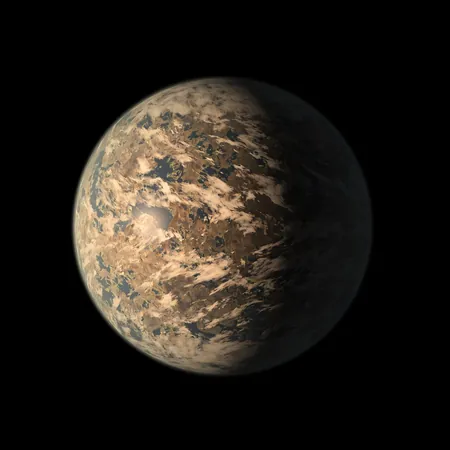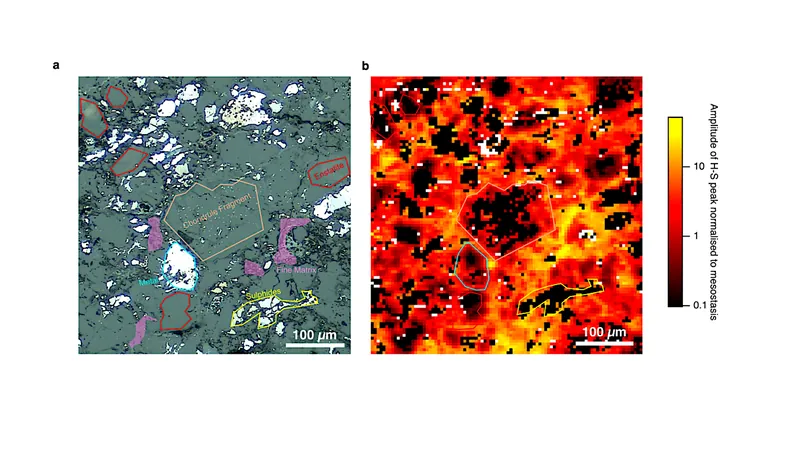
How Space Weather Could Rewrite the Rulebook on Planet Habitability
2025-05-12
Author: Emily
Rethinking Habitability: It's Not Just About the Planets
When we consider the potential for life beyond Earth, we typically envision individual planets as unique worlds. However, the latest research reveals that the real driving force behind habitability lies in the intricate dance between exoplanets and their host stars. This groundbreaking study brings new insights into how space weather can dramatically shape the future of planets.
The Threat of Red Dwarfs and Cosmic Catastrophes
Red dwarfs are notorious for their fierce stellar flares that could obliterate any chance of life on nearby planets. But it’s not just these volatile stars; even our sun contributes to a dynamic space weather environment. Solar flares, stellar winds, and coronal mass ejections have a range of impacts depending on the planet's characteristics. Fortunately, Earth’s protective magnetosphere helps shield us from the worst of these solar extremes.
The Groundbreaking Research on Tidally Locked Exoplanets
Recent findings from the American Astronomical Society shed light on how transient space weather affects the atmospheres of tidally locked exoplanets—those that always show the same face to their star. Conducted by Howard Chen and colleagues at Florida Institute of Technology, this new study available on the arXiv preprint server explores how these cosmic encounters can alter climatic conditions over time.
Impact of Stellar Flares on Climate Evolution
The research highlights that events like stellar flares and coronal mass ejections can vastly impact an exoplanet's atmospheric development and climate. "Space weather events sourced from stellar emissions can substantially influence an exoplanet's climate and atmospheric evolution history," the authors explain, emphasizing the importance of understanding these events in the context of measuring and interpreting exoplanet properties.
From Single-Column to 3D Models: A Paradigm Shift
Unlike most previous studies that relied on single-column atmospheric models, this research utilizes advanced 3D general circulation models. This innovative approach fully captures both vertical and horizontal atmospheric dynamics, incorporating factors like jet streams that are essential for a comprehensive understanding of climate systems.
The TRAPPIST-1 Connection: A Case Study
Focused on exoplanets resembling TRAPPIST-1e, which orbits a distant ultracool red dwarf, the study examines how flares disperse energetic particles. These particles induce both cooling and warming effects in the planet’s atmosphere, radically altering its weather patterns.
The Role of Stellar Activity in Atmospheric Dynamics
As the research suggests, stellar flares can drastically change atmospheric changes, potentially affecting cloud formation and heat distribution. The ability of these events to generate energetic particles induces drastic shifts in an exoplanet’s thermosphere and could even alter circulation regimes, leading to unpredictable climate anomalies.
Implications for Future Exoplanet Studies
The findings have significant implications for future missions intended to image distant exoplanets and analyze their climates. Proposed missions like the Habitable Worlds Observatory may now leverage these insights to better understand weather systems on planets located in habitable zones.
Conclusion: A New Era for Exoplanet Research
As research evolves, it becomes clear that younger stars with frequent flaring events might hold the key to the intricate dance of atmospheric dynamics on their orbiting planets. The study underscores the need for a paradigm shift in how we assess habitability, suggesting that planets around stars with irregular activity might experience the most significant climatic variability. This research opens up exciting avenues for the future of astrophysics and our ongoing quest to find life beyond our own solar system.









 Brasil (PT)
Brasil (PT)
 Canada (EN)
Canada (EN)
 Chile (ES)
Chile (ES)
 Česko (CS)
Česko (CS)
 대한민국 (KO)
대한민국 (KO)
 España (ES)
España (ES)
 France (FR)
France (FR)
 Hong Kong (EN)
Hong Kong (EN)
 Italia (IT)
Italia (IT)
 日本 (JA)
日本 (JA)
 Magyarország (HU)
Magyarország (HU)
 Norge (NO)
Norge (NO)
 Polska (PL)
Polska (PL)
 Schweiz (DE)
Schweiz (DE)
 Singapore (EN)
Singapore (EN)
 Sverige (SV)
Sverige (SV)
 Suomi (FI)
Suomi (FI)
 Türkiye (TR)
Türkiye (TR)
 الإمارات العربية المتحدة (AR)
الإمارات العربية المتحدة (AR)